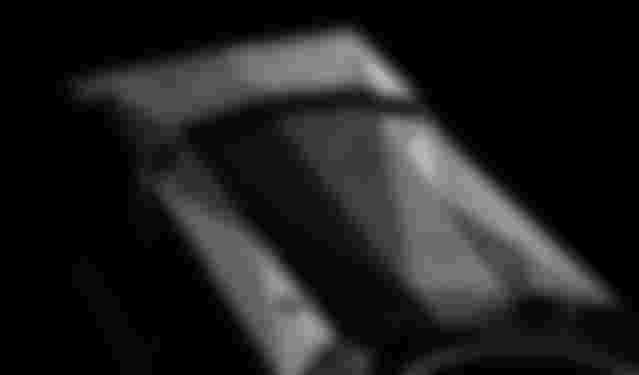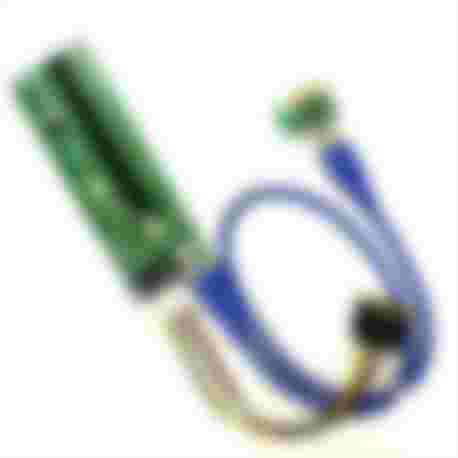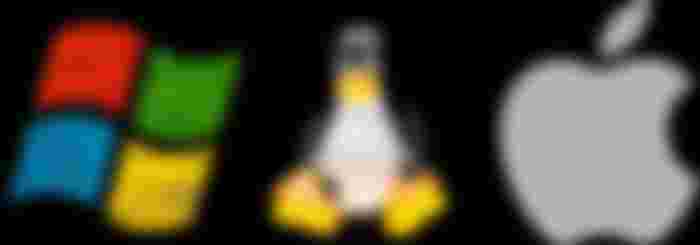Mining cryptocurrency is one of the activities that currently arouse the most interest despite the fact that it is not very profitable in most countries. The main problem lies in excessive energy consumption, which in many parts of the world is an expensive service and causes the energy consumption of an RIG equipment to be excessive.
The definition of mining is like an analogy to gold mining, but there couldn't be a more wrong comparison. Mining is more of a competition than anything else.
Mining is the term we use in the world of criptomonedas to describe the process by which tokens are obtained from a network blockchain .
However, there are countries where electricity is cheap, such as China, Venezuela or Ecuador, where bitcoin mining could be a very profitable extra income.
We will be looking at how to mine Bitcoins and Ethereum;
How to mine bitcoins ?

To mine bitcoins, an algorithm known as hash is used that is responsible for breaking down a chain of blocks and determining it in a fixed length unit, this value is known as nonce.
In the case of Ethereum, the algorithm used is ethash, which is responsible for breaking down the block and condensing it into a number of letters and numbers of a fixed length, all of this deciphering the metadata of the last data block.
The miner's job is to analyze a chain of blocks to determine the nonce of the last block in the system in order to insert a new block referring to the new transaction.
The problem is that the algorithm does not know for sure what the value of the blockchain is.
To do this, you must throw random values until you guess the correct one. The competition is that a blockchain network is made up of several miners or nodes that process the same chain of blocks at the same time, but only whoever guesses the nonce will get the reward.
The miner who is able to analyze the most data in the shortest time is the one who is most likely to decipher the correct value.
Where to buy a miner?

While you can buy a miner, the best way to get a new one is to put it together piece by piece.
A miner is nothing more than a computer capable of processing a lot of information in a short time .
To do this, several graphic processing units (GPUs) are installed on a motherboard linked to a processor.
The power of the miner will be determined by the power of the graphic processing units, which is why between two and six are installed per miner to have greater computational power. This makes assembling a miner an expensive investment.
Building a miner is not much different from building a conventional computer. However, for those who have never done such work, there is the possibility of hiring a specialist to assemble all the components of the RIG.
Methods of mining bitcoins
In addition to the solo mining that we can perform in our homes, there are some mining strategies or methods that are implemented with the intention of increasing the probability of success by deciphering the nonce. The most popular are:
Bitcoin mining farms

A farm is a cooperative system of several miners who come together to increase their power.
When the Chinese government started investing in cryptocurrencies it did so by announcing the creation of mining farms with tremendous processing power.
Bitcoin mining pools
A swimming pool is a cooperative system of miners, but unlike farms, the equipment in the system is dispersed and connected via the internet. The idea is to combine processing power to decipher the nonce of a blockchain.
At the end of the operation, the reward for mining is distributed among the pool members according to the processing power contributed to the group.
Bitcoins mining software
There are two more options to consider if you prefer to go the "self-configure" route. You can join a mining pool and contribute hashing power or mine bitcoins directly.
Either way, you will need the same components for mining bitcoin .
Once you have set up your mining rig, you will need to communicate with the blockchain, directly if you are mining independently or through the mining pool to which you are contributing the hashing power.
The piece that allows you to make this communication is called the bitcoin mining software.
Bitcoin, being the original cryptocurrency, was first mined in 2009 by Satoshi Nakamoto.
Back then it was possible to mine using a regular CPU or laptop at home without much expense.
However, over time, as more nodes began to join the bitcoin network, the difficulty increased and soon developers discovered that graphics cards could mine Bitcoin faster than a CPU and this ushered in the proliferation of graphics cards.
As cryptocurrency became more valuable, competition was imminent and more money was injected into the mining scene and ASICs (Application Specific Integrated Circuits) were soon introduced. ASCIs are very expensive but more powerful than graphics cards.
Therefore, since retail and small-scale miners could not compete with the people who could afford to operate mining rigs using ASICs, they are being done less and less via GPUs.
Basically, at this point, it is economically unviable to mine Bitcoin using GPUs. This scenario has led to greater centralization. The software that could be used to mine bitcoins using GPUs has also become obsolete.
This article presents five of the best bitcoin mining programs that can be used with ASICs.
How does bitcoin mining software work?

The Bitcoin mining software has several functions. The main one as mentioned above is communication with the bitcoin network. It serves to transmit the input of your mining platform to the network and at the same time receive metadata about the network from other nodes.
Not only that, but it also monitors the rest of the network for consensus. If you are part of a group, the software will transmit the same information to the rest of the participants within the group.
The software is also in charge of collecting the necessary information for a correct mining extraction, within this information we can find the information of the fan speed, the hash rate or the connection information, among others.
All of these factors need to be taken into account when choosing a bitcoin mining software. However, the final decision depends on the preference of an individual. The following list of bitcoin mining software features the best softwares for this feature.
Best Bitcoin Mining Software for Windows / MAC / Linux
The list below is by no means conclusive and is also not presented in an orderly fashion. It is a selection of the best bitcoin mining software according to Crypto economy.
CGMiner
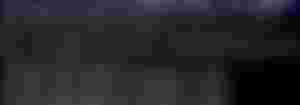
CGMiner is undoubtedly the most popular piece of software for mining bitcoins. It is compatible with all GPUs as well as FPGA and ASIC miners.
CGMiner has a very active community of supporters and a wealth of features. Includes support for mining pools and solo mining.
The software is open source and available for download via the GitHub repository . The most important features included with CGMiner include configuration files, logging, monitoring, as well as API monitoring and overclocking capabilities.
It also supports remote interface capabilities, multi-GPU support, new block auto-detection, fan speed control, CPU extraction support among many other features. The CGMiner was created and improved on the CPU-Miner.
Operating system support
CGMiner is available on all major operating systems . This includes Windows, Mac OSX, and Linux operating systems. CGMiner is coded in C programming language for Linux and Windows with very little use of non-mining CPU and RAM.
BFGMiner

One of the other most popular bitcoin mining programs is the BFGMiner. Packed with customizable features and compatible with a wide range of miners, including FPGAs and ASIC machines.
BFGMiner was a fork of CGMiner with additional customizations and features that make it more appealing to a wider audience.
Some of the cool features that make BFGMiner very popular include built-in overclocking, automatic pool fault detection , multi-device compatibility, fan control including auto-tuning, remote interface capabilities, and option to work with a GUI. command line by default, among other features that can be found in its official forum thread.
Operating system support
Like CGMiner software, BFGMiner is also coded in C language. It supports various types of operating systems, including major ones such as Windows, Linux, and OSX.
EasyMiner

EasyMiner is more of a GUI interface than standalone bitcoin mining software. It works with other software and provides users with the ability to use their favorite software through a more user-friendly interface.
EasyMiner software is an excellent start for miners who care about both the interface and the functionality. It has a nice, clean, uncluttered and modern interface.
Any power user or new to the world of bitcoin mining will immediately be identified with the simplicity that the interface provides.
Some of its more useful features include easy integration with CGMiner, ccminer, and minerd software.
Using EasyMiner allows you to configure your miners to view performance metrics and other bitcoin mining activities through a graphical interface.
The software supports the mining of coins that are encrypted through the SHA-256 and Scrypt algorithms that include Bitcoin and Litecoin, among others.
Operating systems support
EasyMiner supports mining on Windows, Android and Linux operating systems.
Bitcoin miner

Bitcoin Miner is open source software developed for ZTEX FPGA boards. It only comes on a USB interface and can be used for programming and communication between miners and the blockchain.
Using the software, a user can create low-cost FPGA clusters with standard components, for example USB hubs, and allow large-scale mining operations to be run through a single or minimal software instance.
Other features that Bitcoin Miner features include a ready-to-use Bitstream, which does not require any Xilinx Software or a license, and the ability to choose the frequency that has the highest rate of valid hashes.
Operating system support
Bitcoin Miner only runs on Linux and Windows.
RPC Miner
As mentioned in the introductory section, bitcoin mining is more of a subjective activity with all kinds of biases and preferences.
In this regard, some people are fans of the Mac OS platform and for these people the preferred bitcoin mining software has to be OSX compatible.
RPC Miner (aka the puddinpop miner) works exclusively on Mac OS instead of CGMiner or BFGMiner which support a variety of operating systems. This software is compatible with Mac OS version 10.6 onwards.
RPC Miner has a ton of features including performance metric reporting, logging and pool mining support.
Operating systems support
The RPC Miner is exclusive to the Mac OS platform.
Generally, Mining bitcoins provides several different options, starting with the option of mining in the cloud or installing hardware and managing the platform independently.
If you choose to go the hardware install path, you can either mine independently or join a mining pool.
There is not much difference in terms of returns, as when mined independently, the rewards will be widely spaced in time, but will be higher.
On the other hand, when mining in a pool, the rewards are more consecutive but small. In the end, they add up almost the same performance.

In the case of mining Ethereum , this is one of the most profitable ways to get ETH.
It sounds easy to say, but the reality is that all this hides an infinitely large and complicated world that mixes accounting, programming and finance.
How to Mine Ethereum? (The Hardware)

The blockchain system uses a hashing algorithm , which has the ability to convert a block of data into another group of fixed-length characters.
These operations must be carried out by powerful computers that can do it in the shortest possible time.
In the case of Ethereum, the algorithm used is ethash, which is responsible for breaking down the block and condensing it into a number of letters and numbers of a fixed length, all of this deciphering the metadata of the last data block.
For this they use a factor called nonce, which is nothing more than a binary number that determines a single hash value.
Determining the resulting nonce for each operation is like searching for a grain of rice in the desert. Therefore, the only possible alternative is data cycling.
What the miner does is throw a certain amount of possible values until he hits the right one. The computer that manages to decipher which is the correct value is the one who gets their proof of work and as a reward, they will be awarded an amount of ETH.
How to build a mining RIG for Ethereum

A mining RIG for Ethereum (ETH) is not cheap. It is necessary to make a considerable investment to build a good team with a high hashrate that generates a good amount of ether per day.
These computers are nothing more than graphics cards connected to a motherboard that allows the data blocks to be broken down as quickly as possible.
Equipment needed to mine Ether (ETH)
Data cycling is not a complicated task, the problem with Ethereum mining is that the number of possible correct values is too large , which makes it necessary to process a large amount of data to determine it.
So we will need a much more powerful computer than the ones we can have on our work table.
For this, the ideal is to assemble a dedicated work team especially for the extraction of cryptocurrencies from a chain of data blocks.
This type of equipment is known as RIG and we are going to show you how they are composed.
Processor
It may sound contradictory since we have indicated that a powerful team is necessary, but in the case of a RIG, the workload is focused on other components.
That is why when choosing a processor it is not necessary to break your head. With a processor capable of allowing us to run Windows 10 or Linux it is enough.
GPU cards

A graphics card or graphics processing unit is a component manufactured to improve the visual quality of a computer.
In the mining process, all the processing weight falls on them, so that the more and more powerful the GPU's of our RIG, the greater the hasrate of it.
Currently there are different types of GPU's. For Ether mining, we must look at the consumption-processing power-price ratio when choosing.
Hashrate
The hashrate is the potential of the processing unit, it determines how many hashes a unit can process per second.
When choosing a GPU to mine Ethereum, we must pay attention that this value is high, between 20 and 30 MH / s.
Currently the most powerful units on the market are the NVIDIA with Pascal architecture or the AMD with Polaris.
Memory type
There are different types of GPUs, for our miner we will need a card with GDDR5 VRAM memory to mine Ethereum without problems.
Amount of memory
Finally we must look at the amount of memory of the graphics unit. Currently the minimum required is 4GB of VRAM. However, as the DAG file size is progressive, it is best to have a drive with 8GB of VRAM.

Based on these characteristics, the GPUs available on the market would be:
NVDIA GTX 1070 Ti, AMD Radeon RX 480 or better. These GPUs give us a Hashrate of 35MH / s and 30MH / s respectively with an acceptable power consumption.
Multi-slot motherboard
The motherboard is the one that will be in charge of connecting the entire system. In this case, the ideal is to have one with enough slots to connect as many GPUs as we want or are necessary.
A board with six PCI Express slots would allow us to insert six GPUs like those mentioned above that would allow us to build a team with at least 180MH / S.

Because mining has become so popular, there are manufacturers that develop special boards for the job, so that they have several PCI Express slots.
Power supply
While mining Ethereum does not consume as much power as bitcoin, it does require a powerful power source.
Its power will basically depend on the number of GPUs in the computer and their power consumption.
For example, for a computer with six NVIDIA GTX 1070 cards, a power supply of at least 1200W would be required.
Additional components
To complete our Ethereum mining equipment we only have to complete some basic components of any other computer.
We will need some PCI Express extenders called Riser that will allow us to place the GPUs on the board since due to their width and size it is not possible in most cases to place them directly on the board next to each other.

We will also need a monitor to be able to use and view the operating system and mining software . Also a standard hard disk of about 120GB of storage and a DDR3 or DDR4 RAM with a minimum of 4GB.
Nor can we forget about the box, which in this case would be an open type so that all the components fit in it and it is easier to maintain and replace them, another option would be to mount it on an open structure.
The most expensive component of all equipment is the GPUs. Cryptocurrency mining has created a strong demand for cryptocurrencies and today they are a bit scarce.
If we can get them without problems, setting up a RIG mining rig with three or four GPUs would require an investment of approximately € 1500 / € 2500.
How to mine Ethereum (The software)
Once we have assembled our RIG we must choose the software ; the operating system for the miner and mining software .
As for the mining software, we will only stop to analyze the options that are available for mining Ethereum and not in its programming or configuration (we will see that later).
A mining software is nothing more than a program that has the ability to execute a hash algorithm to break down a chain of blocks and determine its nonce and thus create a new block corresponding to a new transaction.
They are advanced programs with a high level of programming based on blockchain technology.
Before installing any mining software we will also need the GETH program that will allow our team to communicate with the Ethereum network.
Mining software which one to choose?
ETHminer
ETHminer is an official client for ethereum mining that allows us to do a custom installation.
Its latest version allows us an improved configuration for computers with multiple GPUs that improves the performance of our miner.

As far as minimum system requirements are concerned, it is not a very demanding program.
We can mine with a team with a GPU with RX460, 4GB of RAM, a dual-core processor and 1GB of hard disk space.
MinerGate
MinerGate is possibly the mining software for beginners par excellence as its interface is very easy to use on any operating system.
Just by registering on their website, downloading the program, specifying the wallet address and running it, we will start receiving rewards.
Also, MinerGate not only allows us to mine Ethereum, but also bitcoin and other cryptocurrencies.
We can use it to mine ETH with CPU or GPU and we only have to pay a commission of 1% of the acquired rewards.
Without forgetting that through its Changelly system we can trade between the currencies that we mine.

As far as the minimum requirements of this mining software are concerned, we note that a particularly powerful equipment is not needed to make it work.
We can mine Ethereum with a GPU with CUDA 7.5, a computing capacity greater than 2.0 and an AMD card With OpenCL with version 1.1 or higher.
Claymore
Claymore is a legendary user of the Bitcointalk.org forum who decided to create his own mining software.
Claymore mining software is widely used today, as we can not only use it to mine ether, but also other cryptocurrencies in dual mining.
As with MinerGate, we can perform mining with CPU or GPU equipment with the same minimum requirements.
They are very similar software that even keep the same commission of 1% of the rewards.
It also has an AMD mode that increases the hashrate speed to 20% on RX460 or RX560 cards.
Not to mention its improved support for teams with up to 10 GPUs. It is currently available for Linux and Windows.
Operating systems

Currently the most famous operating systems are Windows, Linux and MacOS.
Linux
Linux is the favorite of many developers with advanced programming knowledge, as it is open source software that we can modify at will.
However, for a beginner using Linux can be a problem for the configuration and also to get documentary information on how to configure a mining software in this operating system.
MacOS
MacOS is a system that has grown in popularity in less than a decade. However, as with Linux, there is little desk information to guide us in case we are new to mining.
Windows
Windows is without doubt the most used operating system for mining ethereum and other cryptocurrencies for two reasons; it is the one that most users know to use perfectly and many mining software updates are released first in their version for this system.
In addition, there is a lot of information that can guide us without problems if we are beginners.
How to Mine Ethereum? (The Mining Pool)
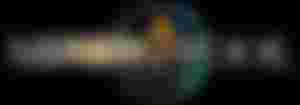
After talking about the RIG and the mining software and before teaching you how to configure everything to start the ether mining, we must talk about an extremely important factor such as the mining pools.
If we really want to take advantage of crypto mining, the best way is by joining a mining group.
What are mining pools?
The mining pool are mining groups in which thousands of users connect the power sapped his RIG to break down a block as soon as possible.
This combination is extremely useful due to the high competition that exists in ether mining.
As you well know, mining is a competition in which the reward is taken by the miner who first manages to break down the previous block and record the new transaction.
This means that if you are mining a block and another node deciphers it first, you are left with no reward despite the time invested.
In the world there are users and organizations that invest hundreds of thousands of dollars in the construction of huge mining farms with unimaginable hashrate power. Competing with them alone is unfeasible and practically impossible.
That is why the mining pools were born, so that users with less economic potential join forces and can compete with those huge mining farms that we mentioned at the beginning.
The only downside is that the rewards for mining are much lower than solo.
However, it is better to be in a group and get small rewards instead of mining alone and waiting for loot that may never arrive.
How are the profits distributed in a mining pool?

As I told you, the profits from group mining are not that large but they are much more recurring.
Once we decide to mine in a group, we must be clear about the methods of distribution of the profits . There are basically two classic types; PPLNS and PPS.
PPS
It is translated in Spanish as Pay Per Share. Each action that is carried out has a value in the Ethereum mining network, this value is what will be attributed to us every time we mine.
If we are used to mining intermittently, this is the best form of payment for us.
PPLNS
It is translated as payment for last n shares (Pay Per Last N Shares). This method of payment depends on the luck of the group.
If in a given period of time the group manages to break down "N" number of blocks, the rewards for the network will be higher.
Obviously, if you cannot break down many, the earnings will be lower, but for a person who keeps their RIG always connected, this method will bring them higher earnings than the previous one.
Other factors that we must take into account are; The mining commissions , taking care that they are not higher than 2% because we will be giving away the work, and the minimum amount of reimbursement.
What are the best pools to mine?
There are hundreds of ether mining pools around the world. However, what have the best user reviews are:
Ethermine
Link: https://ethermine.org/
Ethermine is one of the best today. It works with a PPLNS payment system and its commissions are extremely low (1%). In addition, it has an extremely high hash power that allows it to process more than 30 blocks per hour, making it one of the most powerful on the Ethereum network today.
Ethermine has over 200,000 active workers, allowing it to be so powerful. Plus, your payments are processed instantly and only the amount of 1ETH is required to request them.
EthPool

Link: https://ethpool.org/
Ethpool is a group with a solitary predictive system in which the majority of the profits are attributed to the miner who contributed the most mining power. In addition, it offers us a completely anonymous system in which our personal information will be protected. It has approximately 12,000 workers and breaks down around 5 blocks per hour.
Together with Ethermine, they account for 25% of the power of the entire Ethereum network, positioning themselves as the most powerful mining pool today. In the case of Ethpool, the commissions are 1% and we can withdraw from 1ETH.
F2Pool

Link: https://www.f2pool.com/
This is a Chinese pool with a hash power that covers 24% of the network, being also one of the most powerful. It works with a PPS payment method and these are made daily without problems once the minimum withdrawal (1ETH) is exceeded. The commissions are still very low and despite being an Asian website, it has an interface in English.
F2Pool is one of the least used in Europe and Latin America, but in Asia it is a benchmark when it comes to Ether mining.
Nanopool

Link : https://eth.nanopool.org/
Let's talk about Nanopool, a mining pool with more than 70,000 active miners that credit it with 15% of the hashrate of the Ethereum network today.
Like Ethermine, it distributes your payments with a PPLNS system and these are made several times a day as long as the minimum withdrawal is exceeded.
This pool has servers in Europe, Asia and America, being one of the most used internationally. It should be noted that Nanopool also allows us to mine Ethereum Classic.
Mining Pool Hub

Link : https://ethereum.miningpoolhub.com/
MiningPoolHub is a less powerful pool but it is still very profitable. It has 7.6% of the hashrate of the Ethereum network at present and its rewards are distributed differently than before.
Instead of a PPS or PPLNS system, they use a system in which earnings are calculated based on a transaction fee, a block search fee, and another for incomplete blocks.
Dwarfpool

Link : https://dwarfpool.com/eth
Finally we have Dwarfpool, a pool with a power of 13% of the current network. It has servers in more than one continent and its commissions are 1% like its main competitors.
The rewards work with a PPS system and the best thing is that they have a distributed infrastructure that allows to process payments every hour without problems.
2Miners

Link : https://2miners.com/eth-mining-pool/
2Miners is the youngest pool on the list. It has a good design and many great features, such as its RIG team monitoring bot.
The minimum payout amount is 0.02 ETH and the pool commission is 1%.
2Miners pays all possible commissions, including the transaction fee for payments to miners. The group has 2 different payment schemes: PPLNS and SOLO.
How to mine Ethereum? (The configuration)
Now that we have our mining RIG set up and we have chosen software and pool to mine, it is time to configure our miner to start mining Ethereum .
Although many people believe that this phase is exclusively for programmers, you will be surprised how easy it can be to complete.
You will learn how to configure everything to start mining with MinerGate and Claymore, the most used programs for Ethereum mining today.
Although many more may emerge in the future.
Claymore Installation and Configuration
Before downloading and installing the program, we have to increase the virtual memory of our computer.
To do this we must access the path "Computer Properties / Advanced System Settings / Performance / Advanced / Virtual Memory" and select a value greater than 16GB.
We also have to change the power options and set the computer to never go into hibernation or sleep mode and disable automatic updates to avoid interruptions during mining.
Once this is done, we follow the steps detailed below.
Step 1: First we must download the miner which we can find in the thread created in BitcoinTalk by its developer.
Then we proceed to open the rar file. or zip. as the case may be and we extract the main folder on the computer desktop or on the hard drive.
Step 2: In the miner folder there is a file called config.txt which contains the default miner configuration.
We proceed to make some changes so that this mine according to our requirements.
Step 3: The file tells us that we must remove the "#" from each value so that it can be applied.
Parameters are identified by having a dash and a value and all that is placed after that is the attribute.
Step 4 : We proceed to change the default attributes of each parameter:
"- epool " It will be where we are going to place the address of the mining group to which we will join
"-Ewallet" It refers to the address where the rewards will be sent, so we must replace the one found there with one of ours
"-Epws" It refers to the password of the miner within the group which we must establish to secure our work
"-Mode" Refers to the mining mode that can be dual, place "0", or just ether, place "1"
"-Ems" It is the Ethereum mining stratum mode
"- tt" We establish the maximum temperature of each GPU to avoid breakdowns, the software will control the fans of each one for them
"-Asm" activates the core synchronizer to combine the power of each GPU
Step 5: Once these values have been modified, we proceed to save the changes and we can start mining ethereum without problems.
Mine Ether with MinerGate
MinerGate is the mining software for beginners because it requires practically no configuration whatsoever.
We just have to download and install the program like any other desktop application.
So downloading the program and running the installer will suffice. Once the program is installed we can enjoy the following functions:
Wallet : The wallet is the MinerGate purse in which all the rewards that we obtain will be stored.
In this section we will see an interface in which the available balance is reflected and a field in which we must indicate an Ethereum address to withdraw said earnings.
The only condition to withdraw is that the amount is not less than 0.02ETH.
Smart Miner : This is the smart mining of MinerGate. This software allows us to mine other cryptocurrencies in addition to Ethereum.
What smart mining does is start mining the most profitable cryptocurrency based on the market value of it.
Miner : This is the standard MinerGate miner . In it we can start mining any of the available cryptocurrencies, although in this case what we are interested in is mining ether.
Therefore we are going to choose Ethereum and click on start to start exploiting the network.
In the case of this cryptocurrency, a Pay Per Last N Shares reward system is used (payment for last N solutions) that grants a slightly higher reward to the miner who discovers the latest solutions. The N is a reference to a random number.
Others Pools: This is a tab that allows us to enter other groups of miners. In this case CryptoNotes currencies are used, among which are not Ethereum, Bitcoin or Litecoin.
Benchmark : this tab allows us to calculate the mining power that our computer has.
Archievements : in this section we can see our brands and achievements. Mining is taken in this case as a game and every time we have a good round we get an achievement which is saved in this section.
*The End*












